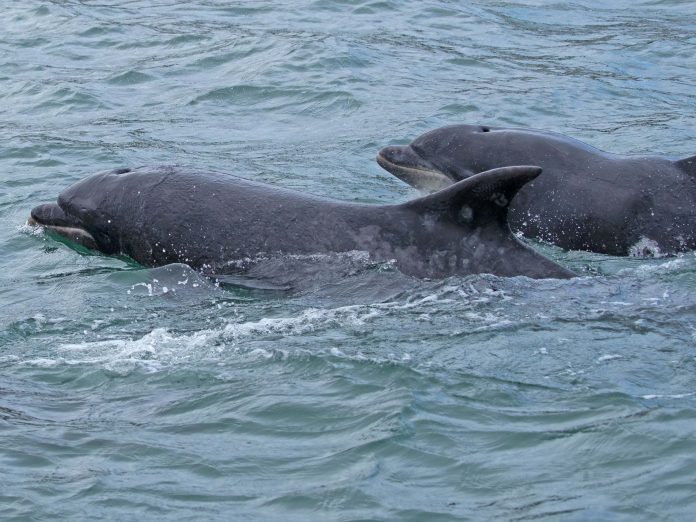Wildlife experts say seals and dolphins move swimming farther south than ever
By James Mumaw From The Mediahq

Wildlife experts have celebrated “extraordinary” sightings of Scottish bottlenose dolphins off the coast of Yorkshire, which are believed to be the farthest from the south that have been seen on the east coast of the United Kingdom.
They have also discovered a seal that “travels” between the Isle of Man and Cornwall to have puppies and look for food.
But the discoveries, among the success stories of UK marine life in 2019, were marred by discovering that a greater number of skiers, kayakers and hikers, as well as drones, caused panic in marine mammals.
A conservation group discovered that plastics, garbage and discarded fishing gear are also devastating to seabirds and mammals.
Wildlife Trusts volunteers recorded 320 sightings of minke whales, bottlenose dolphins and porpoises on the east coast of Yorkshire in 2019.
It was at the southern end of the east coast of Great Britain that the dolphins of Scotland were officially identified. They are normally seen in Moray Firth, opposite Cardigan Bay in Wales and on the coasts of Cornwall, Northumberland and North Wales.
Bex Lynam of the North Sea Wildlife Trusts said: “It is likely that bottlenose dolphins came south behind schools of fish; it is exciting to see playful dolphins and ocean giants like whales.
“Ten years ago, seeing a bottlenose dolphin on the Yorkshire coast would have been weird. We need to collect more data on how and why they are using these waters if we want to protect them better. ”
For the first time, a seal was discovered that traveled between the Isle of Man and Cornwall. The photographs show that the animal, nicknamed Tulip Belle, has been a regular visitor to the southwest since 2001, returning to the Isle of Man every two years to give birth.
Lara Howe of the Manx Wildlife Trust said: “This is the first time for us. We had no idea that they would go as far as Cornwall.
“When I sent our photos of Manx seals to the Cornwall seal group, it was a bit risky and we were all surprised to have found a match. It shows that seals will swim great distances to eat and a place for puppies, highlighting the importance of a network of marine protected areas throughout the United Kingdom. ”
Ms. Lynam said that warming the seas due to climate change meant that the ranges of the species were changing but in different ways.
Cumbria Wildlife Trust reported a record number of gray seals in the South Walney Nature Reserve: 483 including seven puppies, an increase compared to 360 last year. The numbers have increased dramatically from just two in 1981.
But ocean litter also brought death and wildlife injuries in 2019.
Marine debris collected in the Handa Island Wildlife Reserve, off the northwest coast of Scotland, dates back to the United States, Spain, Sweden, Ireland and Canada.
Last month, hundreds of thousands of nurdles, small pieces of industrial plastic, washed and covered parts of Kimmeridge Bay, Dorset. The nurdles, which are used in the treatment of wastewater, are eaten by birds and fish that confuse them with food.
Manx wildlife experts received several reports of seals tangled in plastic or rope.
Joan Edwards, director of live seas at Wildlife Trusts, said the year brought “a radical change in people’s attitudes.”
“The scope of nature and the climatic emergency is becoming increasingly clear, and more people who never volunteer to be scientific citizens and conduct important surveys or take measures to address the deep problems of marine litter and pollution plastic”.
In the past two years, the largest number of dolphin disturbances has been reported to a hotline in Cornwall since monitoring began in 2013, with 16 dolphins alarmed by activities such as jet skiers.
The latest general hotline figures, for 2018, show 245 serious cases of marine fauna in panic, most of which were seals.
Trauma can separate parents from their offspring and interrupt feeding or reproduction, experts say.
For more on this story and images go to; https://themediahq.com/wildlife-experts-say-seals-and-dolphins-move-swimming-farther-south-than-ever/





